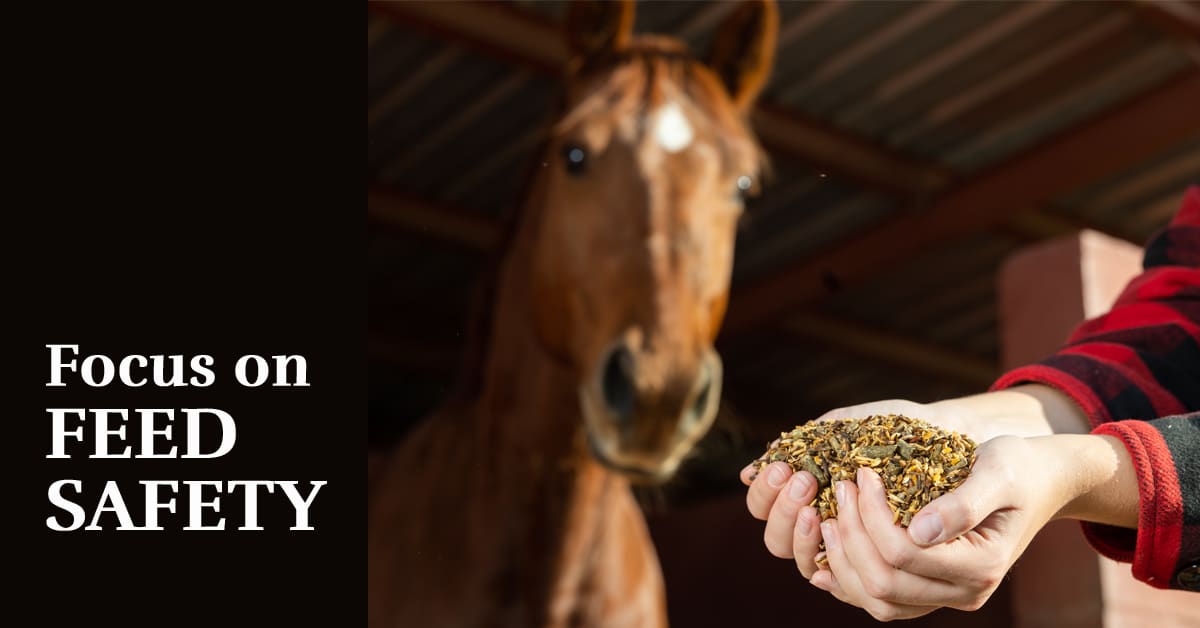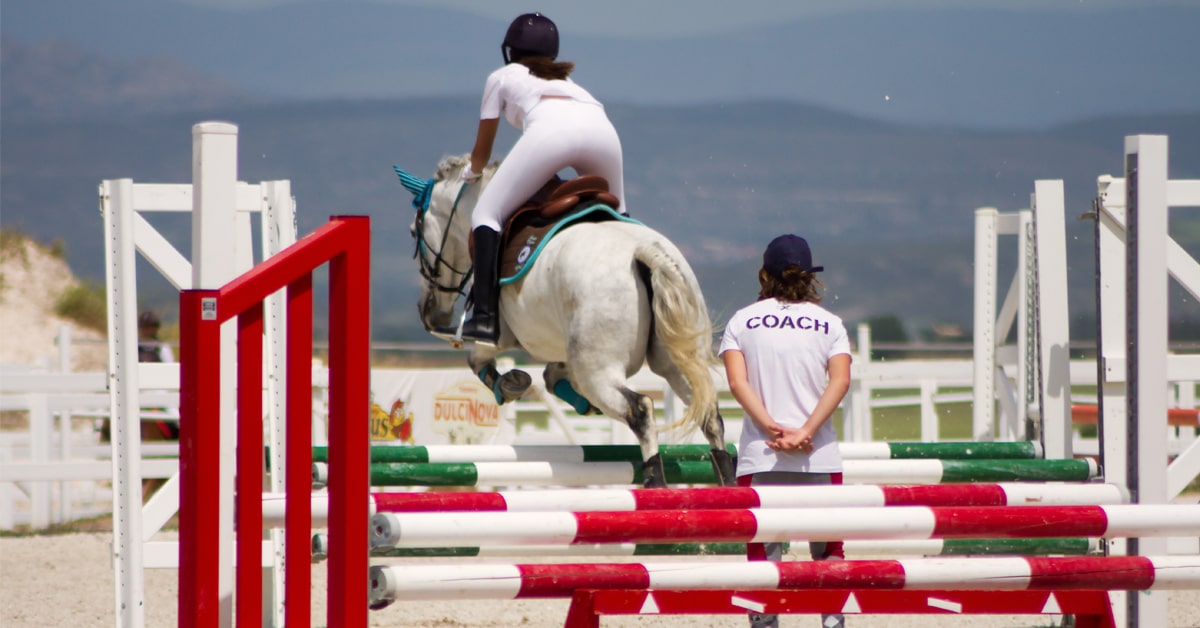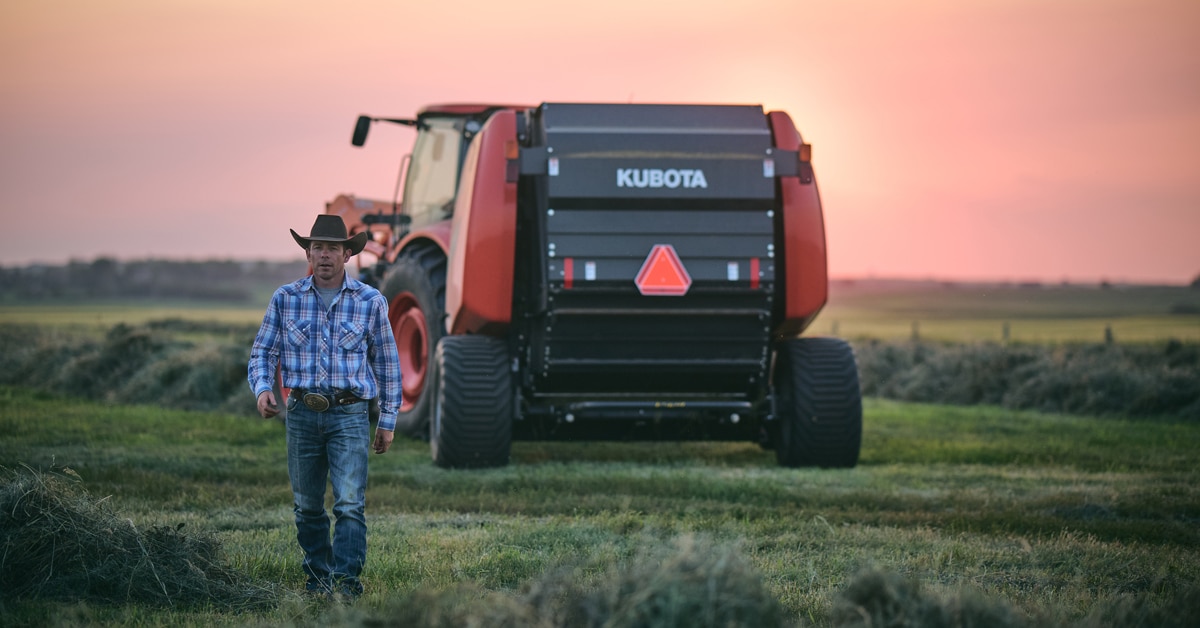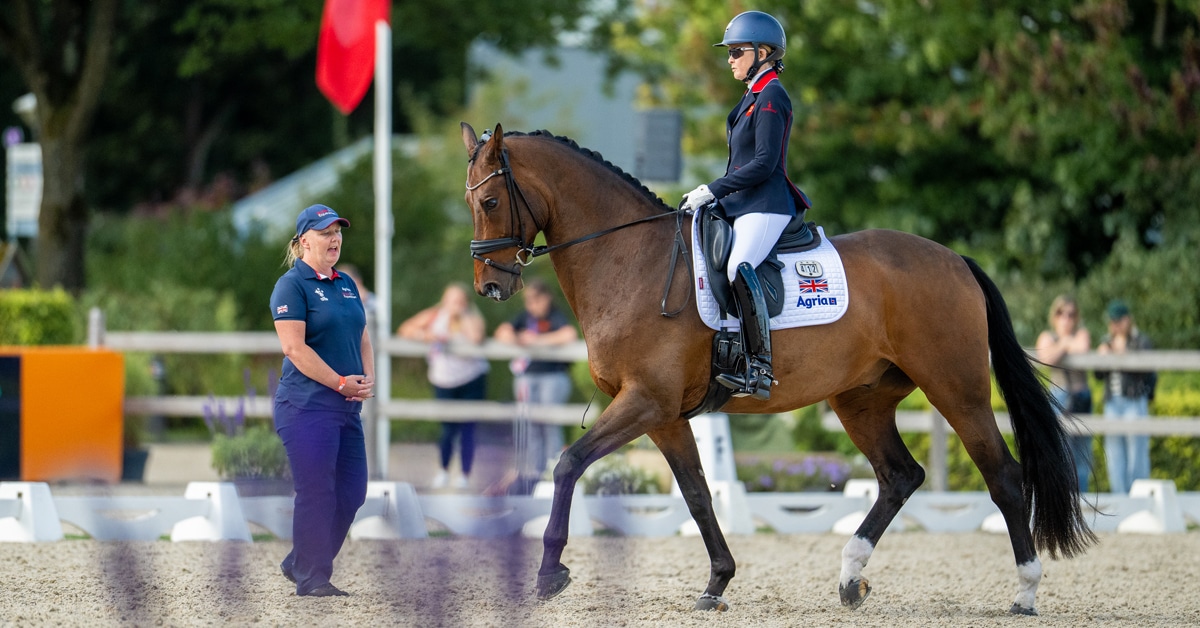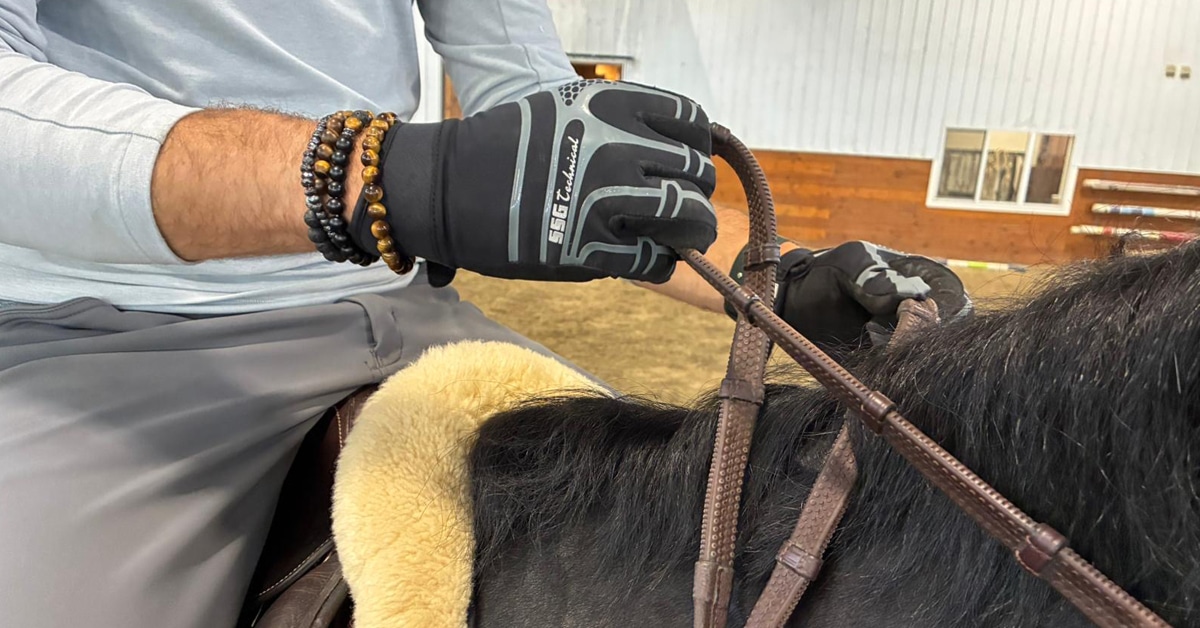The path to the lungs
A horse’s respiratory system is capable of moving an incredible amount of air. Even at rest, the average horse takes in about five litres of air with each breath. At 12 breaths per minute, that is an impressive 60 litres per minute. A galloping horse might take 150 breaths per minute, with the volume of each breath between 12 and 15 litres. The lungs are now exchanging a whopping 2,250 litres of air per minute. (Compare that to a human athlete moving just 240 litres of air per minute).
In the horse, the long soft palate that extends from the end of the hard palate to the base of the epiglottis makes the horse an ‘obligate nasal breather’ where air cannot reach the trachea via the mouth, because airflow is blocked by the soft palate. The horse draws air into the nostrils, where it becomes warm and moist due to the soft bony tissue inside the nose called turbinates, before entering the trachea, which extends down the neck and into the chest, or thorax. There, the trachea splits into two tubes (bronchi), each leading to one of the lungs. Inside the lung, the main bronchi divide and subdivide, becoming progressively narrower until they become bronchioles that lead to millions of alveoli – microscopic air sacs. It is here where oxygen passes into the red blood cells and carbon dioxide passes back across before being exhaled. Any inhaled particles which make it through to the air sacs are cleaned up by special white blood cells called macrophages.
The bronchioles are lined by cilia (minute hair-like processes that beat rhythmically) which propel mucus and particles up from the lungs and through the airways. While there are mucus-producing cells creating a thin layer of mucus lining the airways even in a healthy horse, when infection strikes, the mucus can become thick and hard to dislodge. Even a small thickening in the mucus lining in the airways can compromise performance.
Respiratory diseases can be divided into three categories: infectious, allergic, and parasitic, and include:
INFECTIOUS
Equine Herpesvirus (EHV)
A highly-contagious, common respiratory disease in horses with five identified strains – EHV-1/4 being commonly know as equine rhinopneumonitis. Causes respiratory disease, neurologic symptoms and abortion in mares.
Symptoms:
• decreased appetite
• coughing
• fever (102ºF to 106ºF)
• clear nasal discharge.
Most horses recover in one or two weeks, although they can become EHV carriers. Can be fatal for newborn foals. There are vaccines available, but none claim to prevent the myeloencephalitic form of EHV-1 infection. (For more information about EHV-1, see “At Issue” in the July and August issues.)
Equine Influenza Virus
Two virus types cause equine influenza, which attacks and damages the lining of the respiratory tract. A-equi-1infection is usually quite mild, while A-equi-2 is more serious and can lead to viral pneumonia. Most often seen in the spring and fall, the ‘flu’ has a brief incubation period and can spread quickly through a barn via coughing horses. While the lining of the respiratory tract is repairing itself it is susceptible to bacterial infections or heaves.
Symptoms:
• fever (103ºF to 106ºF)
• depression
• lack of appetite
• dry, nonproductive cough
• nasal discharge which starts clear, then becomes thick and pus-like
• swollen lymph nodes under the jaw
• muscle soreness
• high respiratory rates
• difficulty breathing
• swelling of the limbs
• high heart rate
• inflammation of the eye
The flu can last two-three weeks or longer. (Studies at the Equine Research Centre in Guelph have shown that it takes a month for the cilia lining the airways to recover their function following a bout of influenza.) Vaccine is available.
Equine Viral Arteritis (EVA)
EVA is not as common as other viral respiratory diseases. The virus is shed in nasal secretions and semen.
Symptoms:
• similar to other viral respiratory diseases, plus:
• increased discharge from eyes
• inflamed nasal passages
• swelling in the limbs and abdomen
• abortion in mares
Vaccine is available.
To treat all viral respiratory diseases, supportive care will help with the recovery of the horse. All exercise should be stopped, stress should be kept to a minimum, and the horse should be stabled in an area with good ventilation, or preferably outside if the weather permits. While antibiotics are not effective against viruses, a horse suffering from severe viral respiratory disease may be given antibiotics to help prevent opportunistic bacteria from causing more serious disease. Anti-inflammatory drugs may also be administered to help keep the horse comfortable and encourage eating and drinking. It can take a long period of time for the respiratory tract to heal from a viral infection; the rule of thumb is seven days of rest for every day of fever.
Strangles
A bacterial disease caused by Streptococcus equi. It can quickly spread throughout a barn, as large numbers of the bacteria live in the nasal discharge of affected horses, who spread it to feed tubs, water buckets and walls. Handlers and grooming equipment or tack can be a source of infection, as well as stable flies. The disease takes about 23 days to run its course, but long-term carriers can shed the bacteria for months.
Symptoms:
• thick white/yellow nasal discharge
• fever (103ºF to 106ºF)
• moist cough
• difficulty swallowing
• depression
• lack of appetite
• swollen lymph nodes under jaw an in the throatlatch region
• abscesses
Complications include:
• asphyxia due to enlarged lymph nodes
• migrating to other parts of the body (“bastard strangles”)
• pneumonia
• pus-filled guttural pouches
• purpura hemorrhagica associated with vaccine administration
• heart disease
Generally treated with antibiotics in early stages. Vaccine available.
Rhodococcus equi Pneumonia
This bacterial disease usually occurs in foals aged 4-12 weeks, often when antibody concentration supplied by the mare is tailing off. The Rhodococcus equi organism lives in soil and manure, where it enters the body through inhalation.
Symptoms:
• initial low-grade fever
• fever up to 106ºF.
• cough
• diarrhea
• depression
• infrequent nursing, weight loss or failure to grow
• difficulty breathing
Antibiotic therapy for several weeks is usually prescribed. No vaccine is currently available, although Dr. John F. Prescott, Department of Pathobiology, University of Guelph is currently researching a genome-based vaccination against rhodococcus equi.
ALLERGIC
Chronic Obstructive Pulmonary Disease (COPD)
Also referred to as Recurrent Airway Obstruction (RAO), but commonly know as “heaves,” COPD is a full-blown allergic respiratory disease. The airways are obstructed by inflammation, increased mucus production and bronchospasm, usually caused by dust in the horse’s feed and bedding. Depending on the degree of severity, a horse with COPD may not be capable of much more than moderate exercise; extreme cases may have to be euthanized.
Symptoms:
• chronic, loud cough
• flared nostrils
• strained abdominal breathing
• a ‘heave line’ (a line in the abdominal muscle running from the hip to the lower edge of the ribs)
• weight loss
Avoiding the antigens that trigger COPD (hay, dust, mold, pollen and ammonia) is recommended. Oral corticosteroids are a common treatment. Recent studies at the Université de Montréal in Quebec investigated the effect of inhaled corticosteroids (ICS) on horses with COPD; while it improved the clinical signs, they found that horses got the most relief when receiving ICS and avoiding environmental antigens. Bronchodilators, such as the beta2-agonist clenbuterol, may be prescribed, often used in combination with the mucolytic agent dembrexine to alleviate symptoms associated with the accumulation of mucus.
Lower Respiratory Tract Inflammation (LRTI)
Also called Small Airway Inflammatory Disease (SAID), these inflammatory processes becomes apparent when the horse is put under extreme exertion. Inflammatory airway disease occurs in up to 50% of athletic horses and is a common cause of impaired performance.
Symptoms:
• chronic cough
• nasal discharge
• exercise intolerance at high speeds
• mucus and pus in the pharynx, trachea, and bronchi
To determine the type of pulmonary inflammation affecting the horse, bronchoalveolar lavage (obtaining a sample of fluid from the airways by inserting a flexible tube through the windpipe) is performed.
Treatment should include environmental management (good ventilation, low-dust bedding and hay). May be treated with corticosteroids, antibiotics, mast cell stabilisers or bronchodilators.
PARASITIC
Parasitic Respiratory Disease
The equine roundworm – a common internal parasites of young horses –migrates from intestine to liver to lung, is coughed up by the horse and swallowed back into the intestine, where it matures. The horse may cough and have a nasal discharge, but not necessarily a fever. Damage caused by the roundworm may leave young horses open to other respiratory diseases. Less common is the equine lungworm, which is prevalent in pastures populated by donkeys and can cause chronic coughing if the larvae is ingested by horses. In both cases, a stringent deworming program is recommended.
Prevention
While it is impossible to eliminate respiratory diseases from horse populations entirely, it is possible to decrease the number of occurrences and their severity through biosecurity and other sound management practices:
• consult with your vet and put all horses on an immunization schedule
• ensure that foals have had adequate intake of colostrum immediately after birth
• quarantine horses brought onto the farm, especially those returning from shows, clinics, or other events
• keep pregnant mares in a group away from other horses, especially weanlings and yearlings
• when caring for sick horses, limit contact with healthy horses and their environment
• disinfect equipment that has come in contact with sick horses
• avoid overcrowding in paddocks
• remove manure to avoid environmental contamination and reduce fly populations
For horses with allergic-based respiratory disease:
• turn out as often as possible, especially when the barn is being swept
• feed alternatives to hay such as alfalfa cubes or haylage (do not rely on soaking hay)
• opt for wood shavings, paper, peat or the new synthetic beddings rather than straw
• avoid bedding deeply, which encourages the build-up of bacteria, gastro-intestinal parasite larvae and ammonia
• make sure stables are well-ventilate
• if possible, install skylights in the barn roof – UV rays are a natural killer of viruses and bacteria.
The Latest
